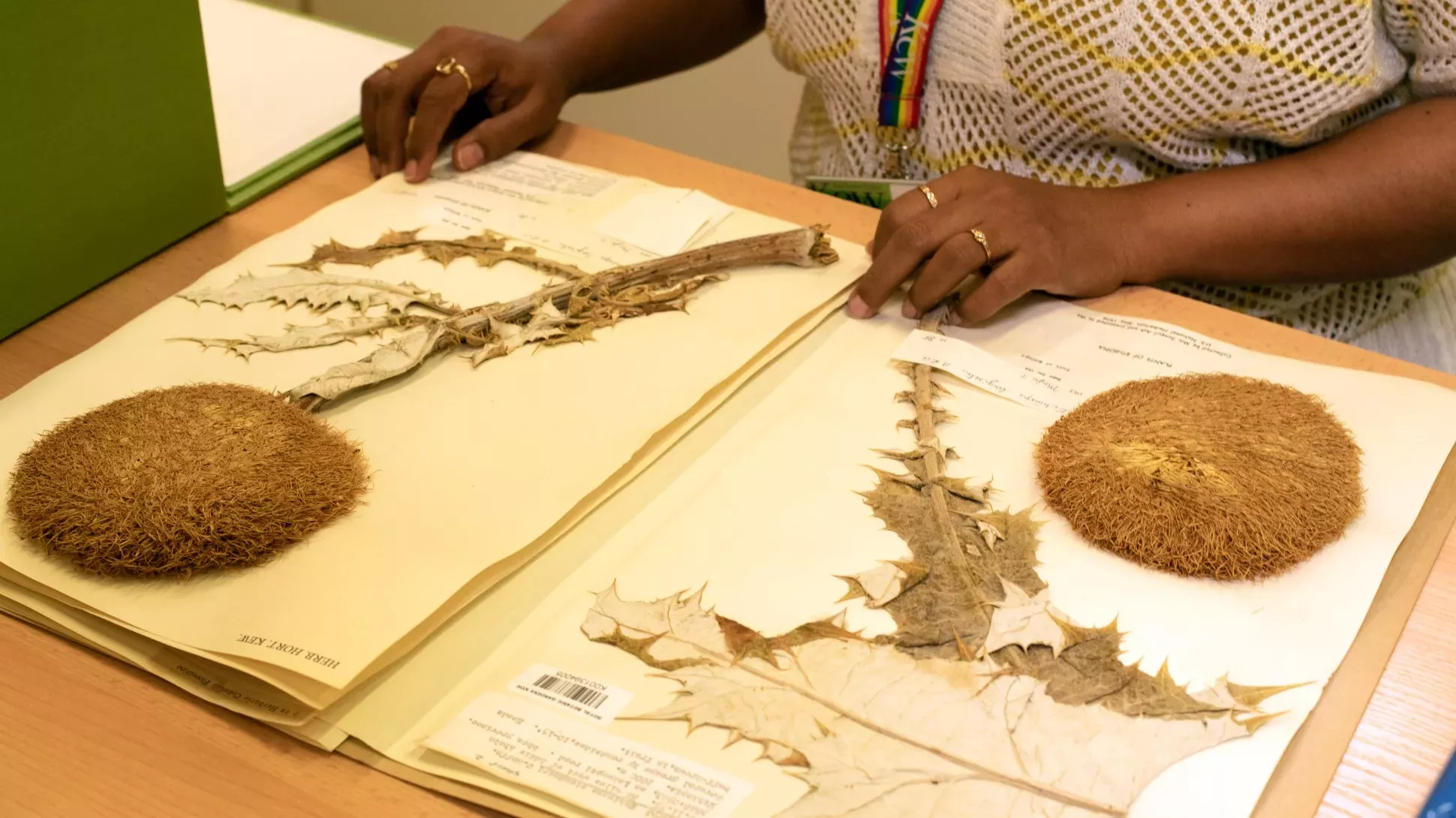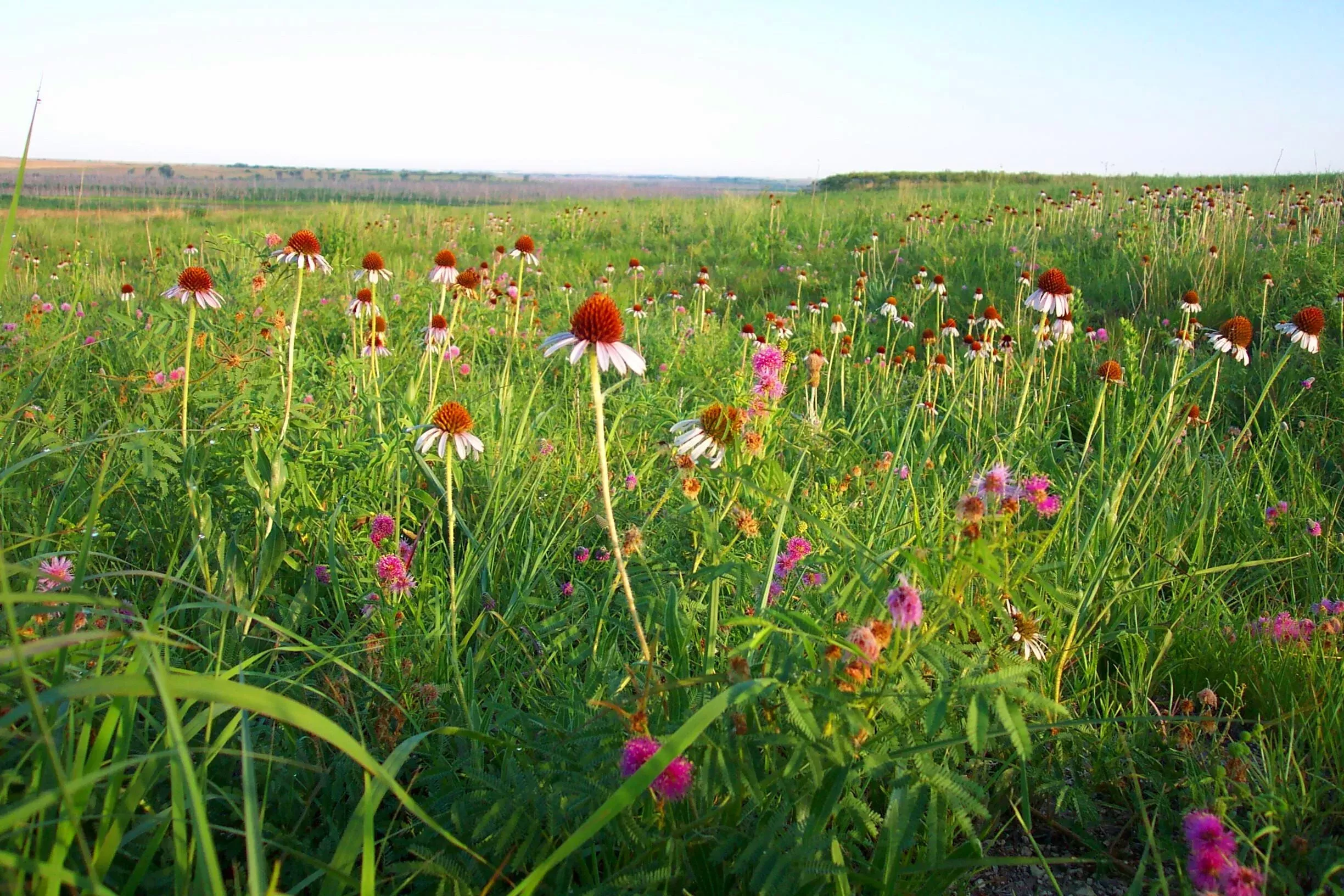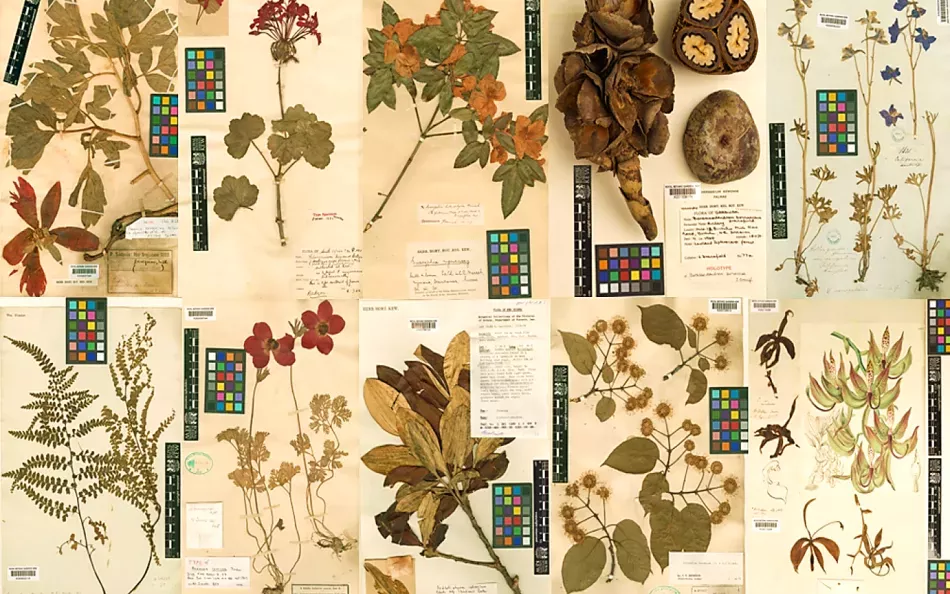6 October 2023
Time travel science with ancient DNA
Next generation DNA sequencing technology is allowing us to step back into the past by analyzing the historical genomes of herbarium specimens.

For several hundred years, people have collected plants as a hobby.
They have pressed them, dried them, and preserved them. Some have ended up as decoration whilst others have become specimens in herbaria at the world’s leading research institutions. Humans’ persistent fascination with the natural world has created over 3000 institutions with nearly 390 million specimens worldwide.
Herbarium specimens form a physical record of botanical diversity across time underpinning all modern taxonomy and systematics research. What more can we learn from them?
We learn much about an organism from the DNA that makes it – a genome. Genomes are easy to study as long as a sample is fresh. Dried plants still contain DNA, but the passing of time has made the study of historical herbarium specimens difficult, until recently.
Now with new techniques at our disposal, the ancient DNA held in herbarium specimens are turning each preserved plant into a bridge to the past – plant science time travel!
A new publication from Rafal Gutaker (Kew) and Hernán A. Burbano (UCL) shows us five practical applications of ancient plant DNA.

1. Who am I? Where did I come from?
Herbaria have long served as a means of identifying plant species and classifying them into groups.
Historically, this was done by eye, comparing the different traits of plants (morphology). Today’s genetic options make it possible to classify even the most similar looking or cryptic species, such as different types of red algae.
The major reward you get from extracting this medley of DNA and morphological data from herbarium specimens is time saved. A group of plants living wild across the globe, but well represented in herbaria, can be categorised in a fraction of the time that it would take to sample live plants from each location.
The method has helped us understand the evolution of specific groups, such as the sweet potato (Ipomoea), and develop huge scale phylogenomic projects. The most famous – the Plant and Fungal Tree of life – owes at least 28% of the taxa examined in its database to sampling from Herbarium specimens.

2. A time machine for the evolution of wild plants and crops
The present-day world is very different to that of even just a couple of hundred years ago. Changing climate, agricultural practices and human activity have all left their mark on our environment.
How plants have adapted to this world can be revealed with their genetic histories.
The movement of people and goods has created the opportunity for invasion, something it’s key that we understand with the huge economic cost of managing invasives.
Herbarium specimens collected during the growth of the North American countries show huge genetic mixing in common ragweed (Ambrosia artemisiifolia) as populations once spread across the landmass were exposed to one another for the first time.
It’s possible this mixing aided the species’ subsequent invasive spread across Europe. A look at the DNA of modern European A. artemisifolia and herbarium specimens taken from across Europe during the 20th century show huge genetic changes from its American ancestors, a likely product of multiple introductions as well as breeding with closely-related European-native Ambrosia species.
As agriculture has changed, so too have the plants we farm, and the plants we consider “weeds” that compete for resources. Genomes from herbarium specimens of ‘weed’ species like blackgrass (Alopecurus myosuroides) show the incredible rise in the frequency of herbicide resistance genes as our use of the products has become more weighty.
Herbarium specimens have also been central in understanding the origins and adaptations of a humble tuber that we all know and love, the potato. We now know that Europe’s source of roasties, chips and mash, arose from the hybridisation of two different potato gene pools introduced from South America.

3. A time capsule of friend and foe
Herbarium specimens carry not just plant DNA, but that of all the microbes associated with them, from partners through to pathogens.
By carefully separating DNA from any modern contaminant species, we can take a glimpse into any plants’ relationships with other species across history.
One of the most notorious pathogens is the potato blight, caused by the slime mould Phytophthora infestans. Sequencing whole blight genomes from infected plants preserved in herbaria has not only expanded our knowledge of the whole species, but identified the individual variant that triggered the Irish potato famine in the mid-1800s. The variant disappears completely from specimen records by the 20th century.
Bacteria can be identified from herbarium specimens too. As the bacteria responsible for Asian citrus canker disease (Xanthomona citri) spread across the world, we see genome changes linked with climate change and the global expansion of citrus fruits as a crop.
Plants have a beneficial root microbiome that tells us a lot about their health, much like our human gut microbiome. Soil remnants on herbarium specimens as well as the dried roots themselves could expose how we’ve changed our global soil microbial communities.

4. Combining DNA with other molecular data
Combining ancient DNA with studies of other molecules in herbaria specimens will open up new exciting research avenues.
Ratios of Nitrogen isotopes (atoms of an element that contain different amounts of neutron particles) in herbarium specimens reflect the changes we make to the world, such as the mass use of synthetic fertiliser. Changes of those molecules in plant specimens inform us about the fundamentals of nutrient cycling in the environment.
There’s a lot of work to do here on studying the stability of these molecules over time, to start making airtight conclusions.

5. Phenotypic traits combined with genetic
Last but not least, we return to the beginning – the observation of how plants change by eye alone.
We can see changes in traits such as wildflowers over time that we expect is due to the climate, but we need to know how the climate is causing that change.
Within plants it’s completely possible for species to adapt with little change to their DNA at all – something we call “phenotypic plasticity”. For example, species flowering earlier in the year in response to a warmer spring.
Matching historic DNA to the changes we see with our own eyes in herbarium specimens is going to tell us whether these changes are the result of a plant’s incredible plasticity, or if we’re seeing evolutionary differences start to pop up.

Past, Present, and Future, Together
There’s never been a doubt that herbarium specimens are powerful tools to answer questions about the green world surrounding us, and now they’re even more important as we continue to change that world.
Most recently, herbarium specimens have shown conclusively that the number of stomata (the holes on leaves that plants use to exchange CO2 and oxygen) is decreasing, with stomatal DNA changing from what we see in ancient specimens to plants sampled today. This is an adaptation to an atmosphere with more CO2, our creation.
Herbaria have allowed us to understand our evolutionary past, they’re helping us understand our present now, and as you’ve seen above, they’ll be decisive in helping us to understand and potentially change what lies ahead.






